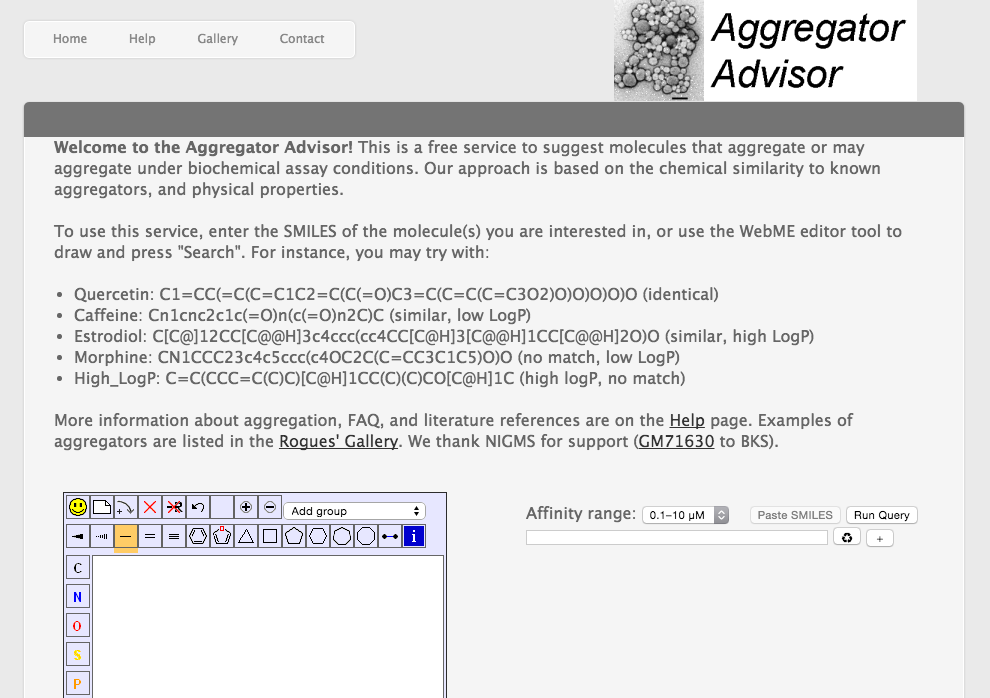
Make docking as easy to use as BLAST by lowering the barriers to entry for molecular docking
Molecular docking is the most pragmatic approach to use protein structures for ligand discovery. Notwithstanding numerous successes, the technique remains difficult to use for novices and is tricky even for experts. DOCK Blaster is our attempt to lower the barriers to using molecular docking.
In 2018 we broke ground on a new version of DOCK Blaster, Blaster18, which aims to address weaknesses in our first implementation, Blaster9.
Blaster18 is powered by UCSF DOCK 3.7 and ZINC15.
We are currently testing Blaster18. In the meantime, the previous versions are:
- DOCK Blaster - blaster.docking.org - a free web portal for non-covalent molecular docking.
- DOCKovalent - covalent.docking.org - a free covalent docking server.
- Metabolite docking - metabolite.docking.org - a molecular docking service focused on metabolite docking for protein function discovery.

Ligand based tools
We develop and maintain ZINC, a database of commercially available and annotated compounds for virtual screening, ligand discovery, and systems pharmacology.
ZINC allows you to answer questions such as:
- What compounds can I buy that are similar to my compound? (ABC or Analog By Catalog)
- What compounds can I buy that are active against my target? (intersecting annotated and purchasable chemical space)
- What are the most similar metabolites, drugs, or other bioactives to my compound? (bioactivity inference by molecular similarity)
- What building blocks can I buy to do chemistry?
We are currently working on a major new version, ZINC 15, that offers many new tools for finding bioactive compounds for targets.
The new version of ZINC allows new questions such as:
- What biogenic compounds are active against my target?
- What is the nearest metabolite, drug, or other bioactive to my compound?

Aggregator advisor
Aggregator advisor answers the question: Is my compound previously reported to aggregate, or is it similar to one that is known to aggregate?
Other Research topics
- What would an optimal phenotypic screening library look like?
- How good is a screening library?
- How could a screening library be improved